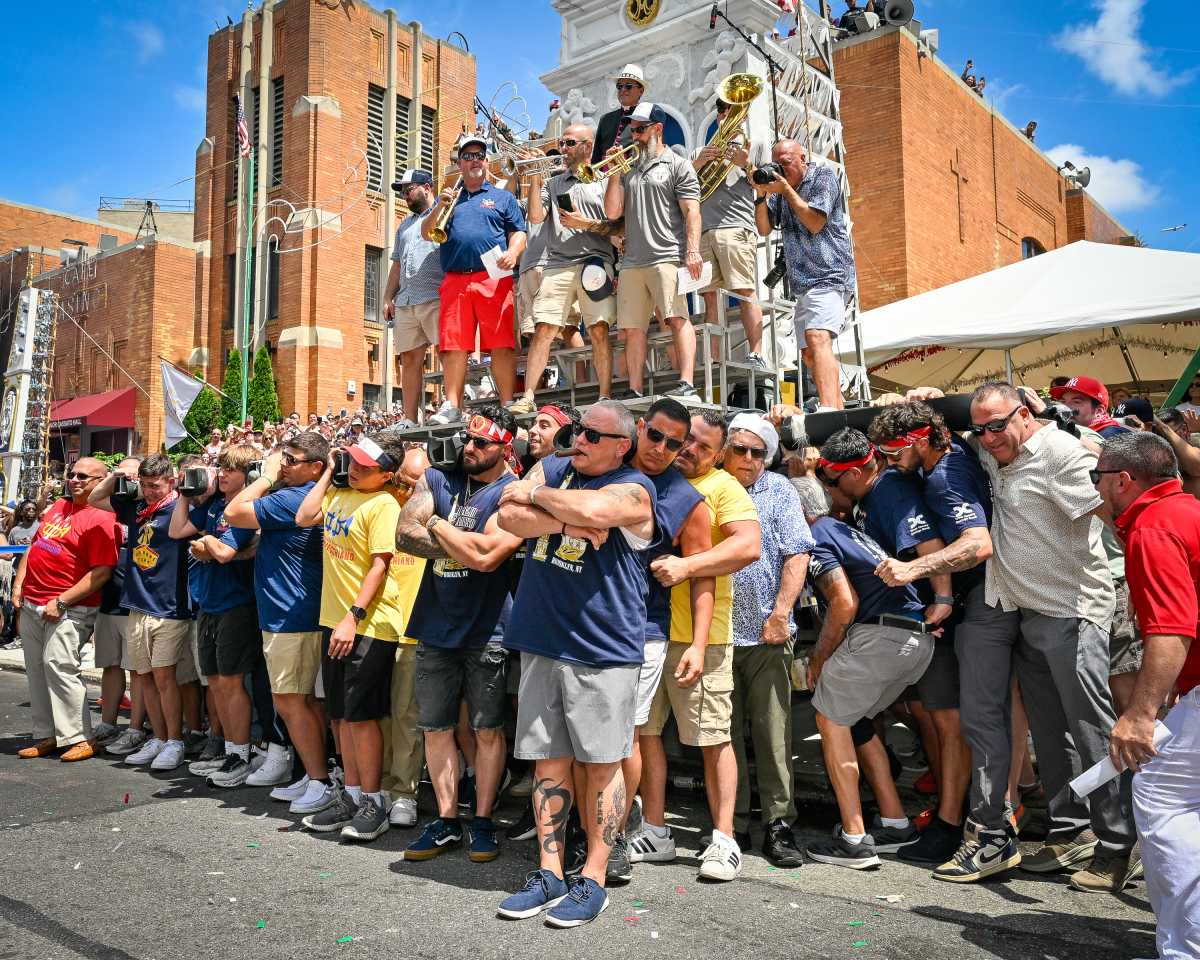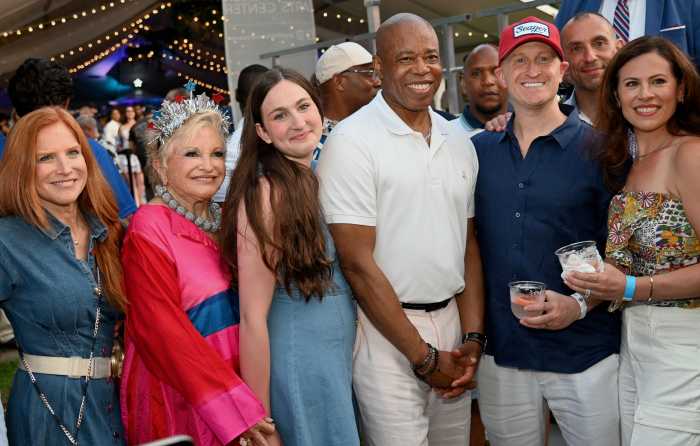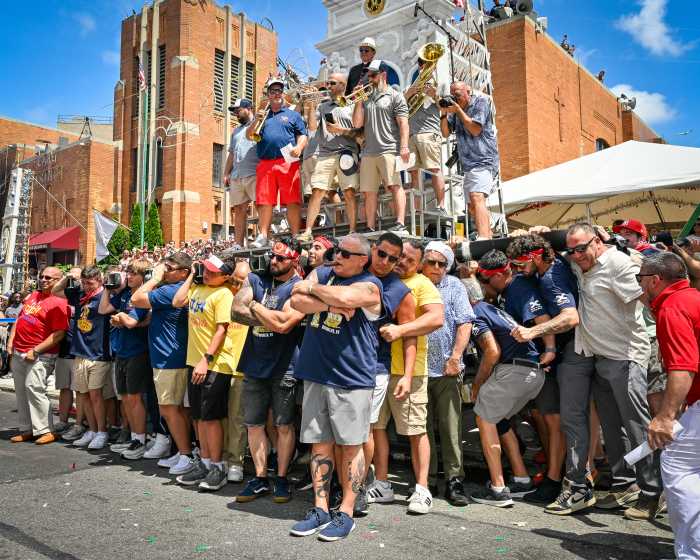By Maria Passannante Derr
At the community board level of government, New York City issues are shaped by the views and desires of the local residents, those who are most affected by whatever is current and topical. As chairperson of Community Board 2, I am extremely close to this process. Along with my committee chairpersons and other members of the board, we get the opportunity not only to respond and obtain local feedback to questions and issues that are passed down to us by various city agencies, but also to set agendas based on what we are hearing from the members of the community are their priorities.
What we are now facing, as a community and a board, is very different from what community boards contemplated 10, 15 or 20 years ago. Crime is low compared to the not-so-distant past, community policing has become more effective, and people are taking more responsibility for and interest in their immediate environment because they understand that they have a stake in their city, their neighborhood, their block. Consequently, C.B. 2 engages in many “quality of life” issues. Some of those that have been recently addressed will evolve over months and, in some cases, years to come as the city continues to progress.
The renovation of Washington Square Park is one of those topics that have generated much attention for two years now. Our responsibility as a board has been to listen to all sides, to consider the ramifications of the different and, in many ways competing, interests, plans and visions and to make the best judgment call possible in terms of what we will endorse or advise. Thousands of hours have been invested by community groups, the Parks Department and elected officials, and the community can be proud that the much-needed renovation of Washington Square Park is scheduled to begin in the spring of 2006. As Phase1 moves toward the bidding process, the board is eager to turn its attention to other parks and open areas. While the community will never agree 100 percent on the plans, at this juncture in history, I firmly believe that we have carefully weighed all sides and made decisions democratically, with a view toward what is good for all New Yorkers who use the park regularly and the many tourists from around the world who enjoy its energy and beauty.
While Washington Square Park is a local issue with strictly local ramifications, the recent settlement of the lawsuit involving the Gansevoort Peninsula, while “local” at first glance, speaks to the always piquant debate on eminent domain, or the taking of private land for a government purpose. The Department of Sanitation, pursuant to a court settlement, wherein D.O.S. agrees to vacate its use of the Gansevoort Peninsula, is seeking to establish a garage facility on Spring St. The question is whether the city will invoke eminent domain against the current owner, United Parcel Service, to establish a garage on that site. C.B. 2, last month, voiced its disapproval of this site being used for a D.O.S. garage. The prospect of undoing the positive growth and development, both in the recent past and future, by permanently binding this piece of real estate to a D.O.S. site, is a cause for great concern. It is incumbent upon the city to solicit input from the community and bring it into these discussions in order that the concerns of local residents are considered.
One conflict that I’ve personally taken an active role in is a conflict between a number of residents of the Christopher St. area and the large contingent of young gay people who use Hudson River Park to gather. The latter feel that they’re being targeted by residents who don’t like their presence on Christopher St., an area that has, for a half-century, provided a safe gathering place for gay people; while the residents feel that the park’s current curfew creates a disruptive mass exodus through the neighborhood resulting in crowded streets and noise. This issue could take several years to resolve and the board will be discussing various experiments that may accommodate both sides, the object of which is to find a workable scenario that reduces tension in the community while preserving the vitality and freedom of the Village.
Nothing has been more contentious over the past few years than the process of granting liquor licenses. In these matters, C.B. 2 plays strictly an advisory role. It has the power to neither grant nor deny a liquor license. Applicants for full, on-premise sales of liquor appear before our Business Committee, but it is the State Liquor Authority that grants or denies a license. The board will make a recommendation on quality applicants where there appears to be no tenable reason to deny, but has requested that the S.L.A. hold 500-foot hearings as well as adhere to other local laws to ensure that neighborhoods aren’t overwhelmed by liquor establishments. The board has also recommended mediation between applicants and community members in order to resolve issues of contention. Our goal is to work closely with all parties, to maintain a balanced Business Committee and fulfill our charge as “gatekeeper,” so that neighborhoods remain livable while businesses are allowed to thrive. It’s a fallible process and will always remain such. We will never be able to please all sides or anticipate all developments.
A similarly contentious issue is that of development, especially residential. The recently approved downzoning of the Far West Village, which was very exciting, changes the picture for C.B. 2. Much of what came before the board previously — especially high-rise development — is no longer allowable. This won’t ease issues of development, however, and, in some ways, complicates the picture, as preservation will become more of an issue for our Landmarks Committee as there is also an impending change to the area’s landmark status.
One preservation issue, currently before us, is the renovation of Jefferson Market Library. Very few would disagree that this is a building of historical and architectural value to the Village. However, it has been left in a decrepit state for some years now. The board has issued a resolution that supports going forward with interior renovations but we also have to urge our local officials to come up with a plan for the exterior, which has been wrapped in scaffolding for way too long. The city must recognize that preservation carries with it financial responsibilities. Buildings must, in fact, be preserved if preservation attributes are attached to them.
Pleasing everyone in development and preservation matters is impossible. The right balance must be struck. A board never wants to give its endorsement to plans that are ill conceived or out of character. But even those conditions are not so obvious, as judgments of architectural integrity are so often subjective. Will new development add to the economic and aesthetic health of the neighborhood? Will it help to generate commercial activity where some is needed? Will there be a component for affordable housing? What does the zoning allow? And how do the neighbors feel about it? These are all questions that the members of two committees, Zoning and Landmarks, must ask themselves. As the city continues its constant evolution, the board will be vigilant in making sure that community concerns are heard in regard to development of our streets, open spaces and waterfront.
Issues that reaffirm C.B. 2’s commitment to social values, concerns and progress are expected to be addressed in 2006, including accessibility for the disabled, the treatment of and laws affecting the L.G.B.T. community (including equal marriage rights), economic and community development, emergency response preparedness, the threats of hospital closures, response plans for a possible flu pandemic, possibly a resolution on the war in Iraq and more.
I continue to be impressed with the commitment of our board members who strive to make the best judgments that fit in to the big picture. These members, 50 individuals with diverse personal and professional experiences as well as opinions, represent an invaluable community asset. The vigor of the local residents and business owners who make up the community is impressive, too.
It’s a testament to New York that the political process is not strictly “top down” as it is in so many other places. The year 2006 will continue to see the city in transition, as it has always been and always will be. We will continue to take up the issues I’ve described above, and others we can’t foresee. Fortunately, we have a wealth of talent available to us at C.B. 2, for which I am grateful.
Passannante Derr is chairperson of Community Board 2, which includes the area bounded by 14th and Canal Sts. and the Bowery/Fourth Ave. and the Hudson River.








































